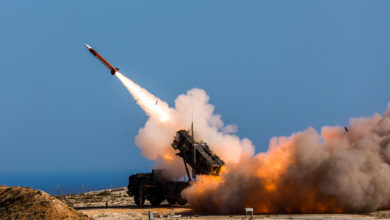US Army Taps Raytheon to Deliver NASAMS to Ukraine
The US Army has awarded a $182 million contract to Raytheon Missiles & Defense to supply six National Advanced Surface-to-Air Missile Systems (NASAMS) to Ukraine.
Valued at $182 million, the systems are expected to bolster Ukrainian forces’ defense against advanced aerial threats.
The NASAMS consist of AMRAAM missiles (advanced medium-range air-to-air missiles), a Sentinel radar, and a fire distribution center module developed by Norway’s Kongsberg Defence & Aerospace.
Through the combination of these technologies, the Ukrainian military can maximize NASAMS’ operability in classifying and engaging current and new-generation aircraft, drones, and cruise missiles.
“Raytheon Missiles & Defense and our partners are working diligently to quickly deliver this critical, proven air defense capability to help the Ukrainian people defend their homeland,” said Raytheon Land Warfare & Air Defense President Tom Liberty.
“Ukraine will join a dozen nations around the globe who rely on NASAMS to defeat a multitude of threats,” Liberty added.
Latest Military Aid to Ukraine
The NASAMS procurement is part of the latest Ukraine Security Assistance Initiative announced on August 24 by the US Department of Defense.
The commitment, valued at $2.98 billion, is the single-largest tranche ever produced by the US to Ukraine since the February 24 invasion.
The military aid includes six NASAMS and munitions, more than 245,000 rounds of 155mm artillery ammunition, 65,000 rounds of 120mm mortar ammunition, 24 counter-artillery radars, Puma drones, and support equipment for ScanEagle drones.
In addition, the US government will deliver VAMPIRE anti-drone and laser-guided rocket systems to counter Russian unmanned aerial systems.
The Pentagon initially revealed its plans to procure NASAMS and include it in future military assistance to Ukraine during a press briefing held in late July. Once the missile systems are delivered, Ukrainian troops will receive the necessary training to operate them.












